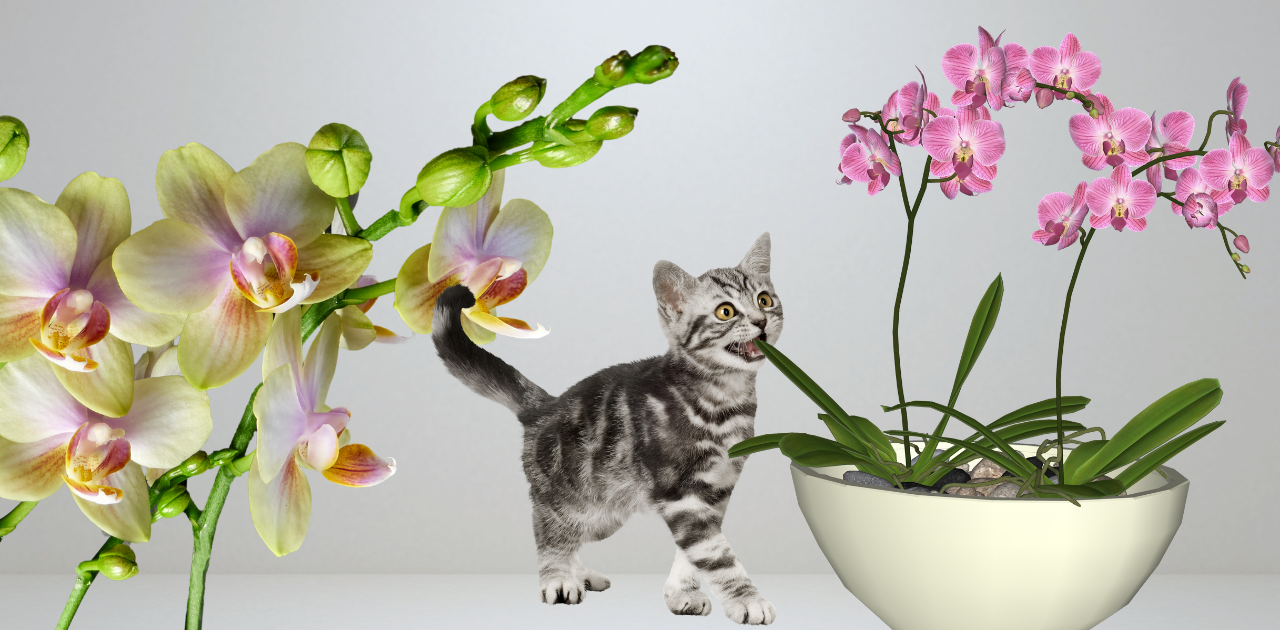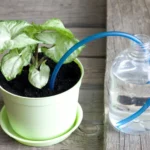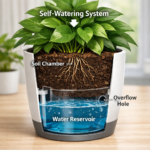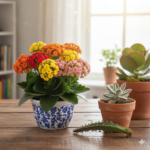Orchids are a favorite among plant enthusiasts for their exquisite beauty and elegance. However, if you’re a cat owner, you might be worried about whether these stunning flowers are safe for your feline friends. Cats are naturally curious and often explore their surroundings by sniffing and nibbling on plants. This behavior can raise concerns about potential toxicity and the health risks associated with common household plants.
In this article, we will explore whether orchids are safe for cats, debunk common myths, and provide you with all the essential information you need to ensure a harmonious and safe environment for both your plants and pets. Stay tuned to discover everything you need to know about orchids and cat safety.
About Orchids
Orchids have a fascinating history that dates back millions of years, with fossil records suggesting their existence over 100 million years ago. These captivating plants are native to various parts of the world, primarily tropical and subtropical regions, including Central and South America, Asia, and Africa. Orchids were first introduced to Europe in the 18th century when explorers and botanists began collecting and documenting these exotic plants. The Victorians developed a particular obsession with orchids, known as “orchid-mania,” driving the demand for rare and unique species.

Over time, the cultivation and hybridization of orchids became more sophisticated, leading to the vast array of species and hybrids available today. Orchids are now celebrated for their extraordinary diversity and beauty, with over 25,000 known species and countless hybrids. Their intricate flowers and wide range of colors, shapes, and sizes have made them a symbol of luxury, elegance, and natural wonder, captivating plant enthusiasts and botanists alike.
Popular Types of Orchids

- Phalaenopsis Orchids (Moth Orchids) Phalaenopsis orchids, also known as moth orchids, are among the most popular and widely cultivated orchids. They are beloved for their large, long-lasting flowers and ease of care, making them ideal for beginners. These orchids typically bloom once or twice a year, with flowers that can last for several months.
- Cattleya Orchids Cattleya orchids are famous for their striking, fragrant blooms and are often used in corsages and floral arrangements. Known as the “Queen of Orchids,” Cattleyas are prized for their large, showy flowers that come in a variety of colors and patterns. They require a bit more care than Phalaenopsis but are well worth the effort.
- Dendrobium Orchids Dendrobium orchids are another popular variety, known for their beautiful, delicate flowers that grow in sprays. These orchids can produce a profusion of blooms and come in a wide range of colors. They are relatively easy to care for and can adapt to various growing conditions.
- Oncidium Orchids (Dancing Lady Orchids) Oncidium orchids, often referred to as dancing lady orchids due to their distinctive flower shape, are admired for their vibrant, colorful blooms. They can produce numerous small flowers on branching spikes and are relatively easy to grow, making them a favorite among orchid enthusiasts.
Why People Love Orchids?
People love orchids for a multitude of reasons, primarily for their extraordinary beauty and diversity. Orchids are renowned for their stunning, intricate flowers that come in an incredible array of colors, shapes, and sizes, making them a favorite among plant lovers and collectors. Each orchid species has its unique charm, from the elegant Phalaenopsis to the fragrant Cattleya. Orchids also have a fascinating cultural and symbolic significance.
In many cultures, they are associated with love, beauty, and luxury. They are often used in weddings, decorations, and as gifts to convey special meanings. Beyond their aesthetic appeal, orchids are relatively easy to care for, especially popular varieties like Phalaenopsis and Dendrobium, making them accessible to both novice and experienced gardeners. Their resilience and adaptability to various growing conditions add to their popularity. The joy of growing orchids also lies in the challenge and satisfaction of seeing these exotic plants thrive and bloom. For many, orchids represent a connection to nature’s intricate and delicate beauty, inspiring a lifelong passion for these remarkable plants.
Orchid Care Tips
Taking care of orchids can be a rewarding experience, especially when you see them bloom beautifully. Here are some essential orchid care tips to help you keep your plants healthy and vibrant:
.1 Light Requirements
- Indirect Sunlight: Orchids thrive in bright, indirect light. Direct sunlight can scorch their leaves, so place them near east or west-facing windows.
- Artificial Light: If natural light is insufficient, use fluorescent or LED grow lights to supplement.
2. Watering
- Frequency: Water orchids once a week during the growing season (spring and summer) and reduce to once every two weeks during the dormant period (fall and winter).
- Method: Use room-temperature water and water thoroughly, allowing excess water to drain out completely to prevent root rot.
3. Humidity
- Optimal Levels: Orchids prefer humidity levels between 50-70%.
- Increasing Humidity: Use a humidity tray, room humidifier, or group plants together to increase humidity around your orchids.
4. Temperature
- Day and Night: Maintain a temperature range of 65-75°F (18-24°C) during the day and 55-65°F (13-18°C) at night to mimic their natural environment.
5. Potting and Repotting
- Medium: Use a well-draining orchid mix, typically made of bark, perlite, and sphagnum moss.
- Repotting: Repot orchids every 1-2 years, ideally after flowering, to refresh the potting medium and allow for root growth.
6. Fertilizing
- Regular Feeding: Use a balanced, water-soluble fertilizer formulated for orchids. Fertilize every two weeks during the growing season and reduce to once a month during dormancy.
- Dilution: Always dilute the fertilizer to half the recommended strength to avoid over-fertilization.
7. Pruning and Grooming
- Dead Leaves and Spent Blooms: Remove dead or yellowing leaves and spent blooms to encourage new growth and prevent disease.
- Pruning Stems: After blooming, cut the flower spike back to the second or third node to promote reblooming.
8. Pest Control
- Common Pests: Watch for pests like aphids, mealybugs, and spider mites.
- Treatment: Use insecticidal soap or neem oil to treat infestations, and isolate affected plants to prevent spreading.
9. Air Circulation
- Ventilation: Ensure good air circulation around your orchids to prevent fungal diseases. Use fans if necessary to keep the air moving.
10. Rest Period
- Dormancy: Allow orchids a rest period after blooming. Reduce watering and fertilization, and provide cooler temperatures to mimic their natural cycle.
Importance of identifying safe plants
identifying safe plants for your home is crucial for several reasons:
- Pet Safety: Pets, especially cats and dogs, are curious and may chew on plants. Knowing which plants are non-toxic ensures their safety and prevents potential health issues.
- Prevention of Poisoning: Many common houseplants can be toxic if ingested by pets, causing symptoms ranging from mild gastrointestinal upset to severe toxicity. Identifying safe plants reduces the risk of accidental poisoning.
- Peace of Mind: By choosing pet-safe plants, you can enjoy gardening and indoor greenery without constant worry about your pet’s well-being.
- Family Health: Some toxic plants not only affect pets but can also pose risks to humans if ingested or touched. Identifying safe plants creates a safer environment for your entire family.
- Reduced Veterinary Costs: Accidental ingestion of toxic plants can lead to emergency veterinary visits and medical expenses. Using safe plants minimizes these risks and associated costs.
- Educational Awareness: Learning about safe plants enhances your knowledge of plant toxicity and benefits, promoting responsible pet ownership and gardening practices.
- Environmental Impact: Choosing non-toxic plants encourages sustainable gardening practices and reduces environmental harm from chemical treatments or disposal of toxic plants.
Read to know More: Are Money Tree Plants Toxic for Cats?: A Safe Choice
Are Spider Plants Toxic to Cats? Safe Houseplants
General risks of plants to pets
Plants can pose various risks to pets, including:
- Toxicity: Some plants contain substances that are toxic to pets if ingested, causing symptoms ranging from mild gastrointestinal upset to more severe reactions.
- Allergic Reactions: Pets may develop allergic reactions to certain plants, resulting in symptoms like itching, swelling, or skin irritation.
- Choking Hazard: Pets, especially curious puppies and kittens, may chew on plants and risk choking on plant parts.
- Gastrointestinal Blockage: Ingesting plant material, such as leaves or stems, can lead to gastrointestinal blockages, requiring medical intervention.
- Pesticides and Fertilizers: Chemicals used on plants, such as pesticides and fertilizers, can be toxic to pets if ingested or absorbed through the skin.
- Plant Parts: Specific parts of plants, such as seeds, bulbs, or fruits, may contain higher concentrations of toxins, posing greater risks to pets.
Are Orchids Poisonous to Cats?

Many cat owners worry about the safety of their pets around houseplants, especially when it comes to the beautiful but seemingly delicate orchid. The good news is that orchids are generally not considered toxic to cats. According to the American Society for the Prevention of Cruelty to Animals (ASPCA), most orchids are safe and non-toxic to felines. This means that if your curious cat takes a nibble or two of an orchid leaf or flower, it is unlikely to cause any serious harm.
However, it’s always important to observe your pet for any unusual behavior or symptoms after they come into contact with any plant. While orchids themselves are not toxic, any plant material can cause mild gastrointestinal upset in cats if ingested, such as vomiting or diarrhea. To ensure the safety of your pet, it’s a good idea to keep orchids and other houseplants out of reach, or use deterrents to keep cats away from them. By taking these precautions, you can enjoy the beauty of orchids in your home without worrying about your feline friend’s safety.
What Happens If a Cat Eats an Orchid?

If a cat eats an orchid, the good news is that most orchids are not toxic to cats, so serious harm is unlikely. However, any plant material can cause mild gastrointestinal upset in cats, leading to symptoms such as vomiting, diarrhea, or drooling. These symptoms are usually mild and temporary. It’s important to observe your cat for any signs of distress or unusual behavior. If your cat exhibits severe or prolonged symptoms, it’s best to contact your veterinarian for advice. Additionally, while the orchid itself is non-toxic, any pesticides or fertilizers used on the plant could potentially cause more serious reactions, so it’s essential to use pet-safe products.
Which Orchids Are Safe for Cats?
Most orchids are considered safe for cats, including:
- Phalaenopsis Orchids (Moth Orchids) Phalaenopsis orchids are among the most popular and are non-toxic to cats, making them a safe choice for households with pets.
- Cattleya Orchids Known for their large and fragrant flowers, Cattleya orchids are also safe for cats and can be enjoyed without worry.
- Dendrobium Orchids These orchids are admired for their delicate flowers and are non-toxic to cats, posing no threat to your feline friends.
- Oncidium Orchids (Dancing Lady Orchids) Oncidium orchids, with their vibrant and colorful blooms, are another safe option for homes with cats.
These orchids are not only beautiful but also safe for your furry companions, allowing you to enjoy their elegance without concerns about your cat’s health.
What Happens If Cats Eat Orchids?
If a cat eats orchids, several outcomes are possible. Here’s what you should be aware of:
- Mild Gastrointestinal Upset: Ingesting orchid leaves or flowers can cause mild gastrointestinal issues such as vomiting or diarrhea in cats. These symptoms are usually temporary.
- Drooling: Cats might drool excessively after chewing on orchid parts due to the plant’s texture or taste.
- Lethargy: Your cat might appear more tired or less active than usual. This can be a response to mild gastrointestinal discomfort.
- Behavioral Changes: Watch for changes in behavior, such as hiding or avoiding interaction, which can indicate discomfort or distress.
- Monitoring Is Key: Keep an eye on your cat for any signs of prolonged or severe symptoms. Most cats recover quickly without any lasting effects.
- Pesticides and Fertilizers: If the orchid has been treated with chemicals, there is a risk of more severe reactions. Ensure you use pet-safe products on your plants.
- Contact Your Vet: If your cat shows severe symptoms like continuous vomiting, diarrhea, or significant changes in behavior, contact your veterinarian immediately.
- Prevention: To avoid these issues, keep orchids out of your cat’s reach or use deterrents to prevent your cat from chewing on plants.
How to Prevent Cats from Eating Orchids
Preventing your cat from munching on orchids involves a few practical steps:
Strategic Placement
High Shelves: Place orchids on high shelves or hanging planters your cat cannot reach.
Room Barriers: Use baby gates or closed doors to keep cats out of rooms where you have plants.
Use Deterrents
Citrus Sprays: Cats dislike citrus scents. Spray a pet-safe citrus solution on your orchids to deter them.
Physical Barriers: Surround the plant base with aluminium foil or double-sided tape, as cats dislike these textures.
Provide Alternatives
Cat Grass: Grow cat grass or catnip to provide a safe alternative for your cat to chew on.
Interactive Toys: Keep your cat entertained with plenty of toys and activities to divert their attention from the plants.
Supervision and Training
Monitor: Keep an eye on your cat when they are near plants and gently discourage any chewing behaviour.
Training: Train your cat to avoid plants using positive reinforcement. Reward them for staying away from the orchids.
Regular Maintenance
Prune and Clean: Regularly prune dead leaves and flowers to reduce the temptation for your cat to chew on them.
Check for Pests: Ensure your orchids are free from pests, as bugs can attract your cat’s attention.
Can Orchids Cause Allergies in Cats?
While orchids are generally non-toxic to cats, they can still cause mild allergic reactions in some pets. Here’s what you need to know:
Potential Allergic Reactions
- Skin Irritation: Some cats may develop mild skin irritation if they come into direct contact with orchid leaves or flowers.
- Respiratory Issues: Although rare, certain orchids can cause respiratory issues in sensitive cats, leading to sneezing, coughing, or watery eyes.
- Gastrointestinal Upset: Ingesting any plant material, including orchids, can sometimes lead to mild gastrointestinal upset such as vomiting or diarrhea.
Symptoms to Watch For
- Itching or Scratching: Increased scratching or licking could indicate skin irritation.
- Sneezing or Coughing: Persistent sneezing or coughing might suggest a respiratory reaction.
- Vomiting or Diarrhea: These symptoms could be a sign of gastrointestinal discomfort from ingesting orchid parts.
Preventive Measures
- Monitor Interactions: Keep an eye on your cat’s behavior around orchids to detect any signs of allergy.
- Limit Contact: Place orchids out of reach to minimize direct contact and potential ingestion.
- Use Pet-Safe Products: Ensure that any products used on your orchids, such as fertilizers or pesticides, are safe for pets.
What to Do If Your Cat Shows Symptoms
- Consult Your Vet: If you notice any signs of allergy or distress in your cat, contact your veterinarian for advice.
- Remove the Plant: If you suspect the orchid is causing an allergic reaction, remove the plant from your home to see if symptoms improve.
How to Create a Safe Environment for Cats and Plants ?
Enjoying plants while safeguarding your pet’s health involves several key practices:
- Research Pet-Safe Plants: Before bringing a new plant home, research its toxicity levels for pets. Opt for plants that are recognized as safe for cats, dogs, and other household pets.
- Placement Strategy: Position plants in areas that are inaccessible to pets, such as high shelves or hanging planters. This prevents pets from chewing on leaves or digging in soil.
- Monitor Chewing Behavior: Observe your pet’s behavior around plants. If they show interest in chewing or playing with foliage, consider using deterrents or relocating plants to safer spots.
- Use Protective Barriers: Place physical barriers around plants, like decorative fencing or plant stands with grids, to prevent pets from accessing them directly.
- Choose Pet-Friendly Varieties: Select plant varieties that are less appealing or safer for pets, such as succulents, herbs like basil or mint, or ferns like Boston ferns.
- Avoid Harmful Treatments: Refrain from using chemical pesticides or fertilizers that may be harmful if ingested by pets. Opt for pet-safe alternatives or natural remedies.
- Regular Cleaning and Pruning: Keep plants clean and tidy to discourage pets from nibbling on fallen leaves or flowers. Prune regularly to remove wilted or damaged parts that may attract curious pets.
- Provide Alternative Play Areas: Create designated play areas or toys for your pets to redirect their attention away from plants and towards safe activities.
Frequently Asked Questions (FAQ)
1. Are orchids toxic to cats?
Most orchids are non-toxic to cats, making them a safe choice for households with pets. However, it’s always a good idea to check the specific type of orchid and ensure it hasn’t been treated with harmful chemicals.
2. What should I do if my cat eats an orchid?
If your cat eats an orchid, monitor them for any signs of distress such as vomiting, diarrhea, or drooling. These symptoms are usually mild and temporary. If symptoms persist or worsen, contact your veterinarian for advice.
3. How can I prevent my cat from chewing on plants?
To prevent your cat from chewing on plants, place plants out of reach, use deterrent sprays, provide safe alternatives like cat grass, and engage your cat with toys and interactive play to reduce their interest in plants.
4. Which houseplants are safe for cats?
Several houseplants are safe for cats, including spider plants, Boston ferns, areca palms, and certain orchids like Phalaenopsis orchids. Always verify the safety of any new plant before introducing it to your home.
5. Can plants cause allergic reactions in cats?
Yes, some plants can cause allergic reactions in cats, leading to symptoms like itching, sneezing, or mild gastrointestinal upset. If you notice any unusual symptoms after your cat has been near a plant, consult your veterinarian.
Conclusion
Orchids are a beautiful and generally safe addition to homes with cats. While they are non-toxic, it’s essential to monitor your pets for any adverse reactions and keep plants out of reach. By choosing pet-safe plants and following preventive measures, you can create a harmonious environment for both your cats and your greenery. Enjoy the beauty of orchids while ensuring the safety and well-being of your furry friends.







